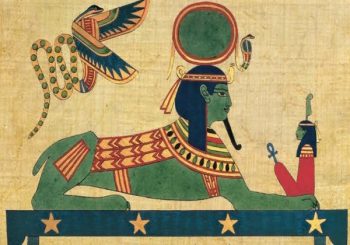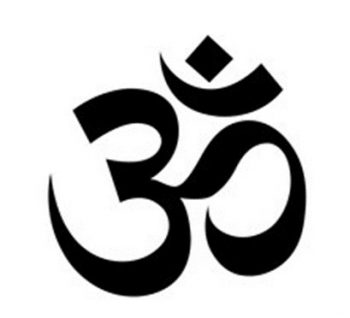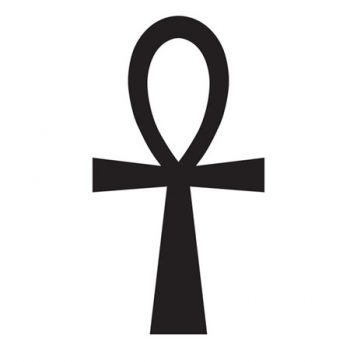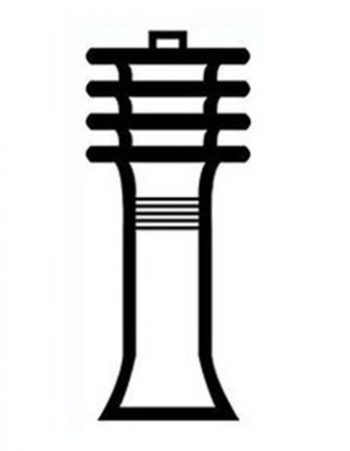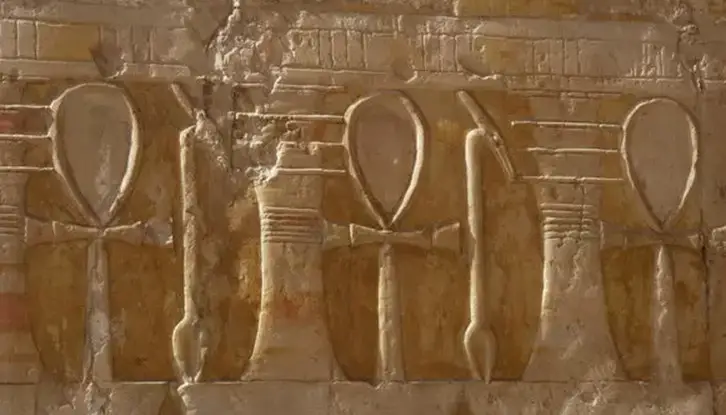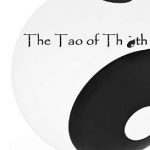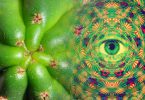Contributing writer for Wake Up World
The Riddle of The Sphinx was said to be asked of every traveler The Sphinx encountered.
“What goes on four feet in the morning, two feet at noon, and three feet in the evening?” The Sphinx asked Oedipus.
Oedipus answered: “Man: as an infant, he crawls on all fours; as an adult, he walks on two legs; and in old age, he uses a walking stick.” Oedipus was the first to answer the riddle correctly and, having heard Oedipus’ answer, the Sphinx was shocked and inexplicably killed herself. Oedipus went on to succeed in his conquest.
[pro_ad_display_adzone id=”110028″]
The Riddle of The Sphinx is interesting, and yet there is something left incomplete. The answer to the riddle does not provide the same provoking pondering that so many other riddles provide. It is literally a dead end. The answer feels incomplete. The Riddle of The Sphinx leaves one perplexed rather than ignited by inquisitiveness. It reveals no mystery and yet is among the greatest of mysteries. It provides no paradigm thinking other riddles might provide, however slight the paradigm may be. It is as if The Riddle of The Sphinx hints at another riddle, as if there the answer quietly points to an unsaid follow up riddle and answer behind The Riddle of The Sphinx.
On critical examination the overall implication of The Riddle of The Sphinx is to define and measure the materialistic lifetime of man. The answer leaves one wanting, perhaps in awe, but wanting nonetheless. It is not an inspiring answer to present mortal fate and is out of tune with the rest of Egyptian pursuits toward immortality. The answer does not resemble the inspired and occulted pursuits pertaining to spirituality and immortality the people of Ancient Egypt/Kemet endeavored.
“There are three, but where is the fourth?” ~Carl Jung
The answer is basic and suggests the unsaid, the esoteric. There are innumerable subjects and systems which contain an overt set of three and a covert fourth aspect. There are so many such sets in fact that nearly every set of three hints at the unsaid, silent, fourth aspect. Perhaps the most significant worldly symbol relating a set of four that illustrates the idea possibly insinuated in The Riddle of The Sphinx is the ancient Aum symbol.
The symbol depicts four stages of consciousness, just as its annunciation is also four parts. Aum is pronounced with the A, U, and M sounds as is clearly depicted. The fourth unsaid sound of Aum is silence itself, the unsaid. The four aspects of consciousness Aum depicts is the sleep state, wake state, deep awakening state, and deep dreaming state. The ancient primal symbolism in Aum reveals the fourth aspect of consciousness is nearly unattainable and ineffable, but like the pursuit toward perfection endless refinement is possible toward it. The fourth aspect in the Aum symbol is the point beyond the veil.
Perhaps the most coveted Egyptian symbol that pertains to the unsaid and distinct fourth aspect is The Ankh.
Variations of the cross symbol are revered the world over. Two lines intersecting form four corners or parts and in the case of The Egyptian Ankh one aspect is distinct. The top aspect of The Ankh is oval, relating feminine or Yin energy, corresponding to the ultimate Yin, the mystery, the unsaid, the beyond, the highest state of consciousness. The Ankh is symbolic for eternal life and the consciousness of life in four parts, just like Aum.
The Egyptian Djed Symbol, like the Ankh, is symbolic of the archetypal four aspects and underlines the idea of the completeness of four in Egyptian symbology. The Ankh is symbolic for the spiritual world of eternity and The Djed is symbolic of the physical world. The Djed pillar is symbolic of the spine of Osiris, a sacred tree, the four directions of Earth and the four sons of Horus.
Four, as well as The Djed itself, are symbolic for completeness and stability. The Ankh and The Djed are often pictured together and sometimes with a third symbol, The Was or fused together fused together with The Was, a sceptre or a staff symbolizing dominion and sovereignty of the mastery.
The simple answer is to The Riddle of The Sphinx is ‘man.’ Yet the answer is perhaps misleading and is certainly basic and inspires little. The hidden unsaid riddle is, ‘what is beyond the walking on three symbology?’ And what is the unsaid esoteric and inspiring answer? The unsaid answer is not the aged man who needs the assistance of walking stick. The contrasting answer revealing potentiation and inspiration rather than degeneration is the master.
The true inspiring answer is the human who has reached mastery standing with a scepter, a staff, a measuring stick, a planting stick, a pole. The unsaid answer is man as a sacred geometer, as spiritual master, akin to Thoth who grasps his measuring stick, symbolizing mastery of the world for the pole symbolizes the world itself, generation and creation, and the measuring/comprehension thereof.
Thoth, and many other Egyptian Gods, hold the measuring staff symbolizing mastery of the world, sometimes they hold more than one staff symbolizing mastery of worlds. Many other allegorical spiritual masters and gods the world over all also hold the staff or pole, symbolizing mastery of the polarity of creation, mastery of life, not feeble walking.
What is commonly known as The Pyramid Text, and The Egyptian Book of The Dead reveals a similar strain of the great riddle facing all of us, the riddle of life and death. The Egyptian Book of The Dead is actually a misnomer of a name and, like the typical supposed answer to The Riddle of The Sphinx, leads one to an uninspiring misnomer, a dead end. The Egyptian Book of The Dead is actually more accurately titled The Book of Coming Forth by Day.
The idea behind coming forth by day as opposed to coming forth by night further reveals the intended subtle lesson of The Riddle of The Sphinx. The opposite of coming forth by day is coming forth by night. Those with deadened and dull awareness come forth by night, those who have pursued mastery come forth by day. The man comes forth by night, the master comes forth by day.
The master. The result of the pursuit of becoming masterful, as Thoth, and as the many other adepts who held the staff symbolically is the unsaid esoteric answer to The Riddle of The Sphinx. In the past many adepts who gained insight and mastery may have been given the title of Hermes Trismegistus, just as the Greek counterpart of Thoth. The master becoming timeless and immeasurable rather than man becoming aged and confined is the unsaid esoteric answer.
Man becoming the sacred geometer to master measure rather than man denigrating to be measured is the answer. The warning that death is coming is not the only inference, the pursuit of mastery beyond original potential is the refined answer, the unsaid fourth aspect.
The Tao of Thoth
This article is an excerpt from The Tao of Thoth. The Tao of Thoth is based on the Taiji of The Seven Tenets of Thoth as illustrated in The Kybalion written by The Three Initiates. The Tao of Thoth is inspired by the relationships of The Tao and The Tenets of Thoth. The Tao provides parallel lessons with The Tenets of Thoth, and each aim towards enhancement and embodiment of lessons pertaining to self-development.
The Matrix of Four
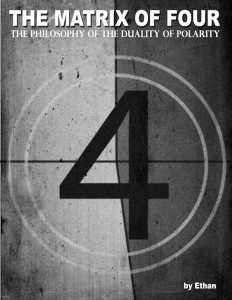 Matrix of Four: the Philosophy of the Duality of Polarity is an exploration of our consciousness, and presents a formula to develop our consciousness and surpass the limitations of traditional political and social constructs. In this work, Ethan relates and explains correlations between the four seasons, Om and a myriad of esoteric and exoteric ideas on consciousness to inspire creative thinking and being. He also explores mathematical and philosophical concepts to engage a higher thinking and being, verified using universality and human traditions beginning with the four operations of arithmetic, referencing the four archetypal characters in Plato’s The Allegory of the Cave, and much more.
Matrix of Four: the Philosophy of the Duality of Polarity is an exploration of our consciousness, and presents a formula to develop our consciousness and surpass the limitations of traditional political and social constructs. In this work, Ethan relates and explains correlations between the four seasons, Om and a myriad of esoteric and exoteric ideas on consciousness to inspire creative thinking and being. He also explores mathematical and philosophical concepts to engage a higher thinking and being, verified using universality and human traditions beginning with the four operations of arithmetic, referencing the four archetypal characters in Plato’s The Allegory of the Cave, and much more.
Matrix of Four: the Philosophy of the Duality of Polarity is available here on Amazon.
Recommended articles by Ethan Indigo Smith:
- Thoth: The Sacred Geometer
- The Sacred Geometry of Tarot
- The Four Dimensions of the Tree of Life – Part 1
- The Four Dimensions of the Tree of Life – Part 2
- The Duality of Polarity: Beyond Nationalism and Globalism
- The Energy of the Divine Masculine
- Tai Chi – The “Grand Ultimate” Form of Self Development
- Understanding Ascension: The Geometry of Energy
- The Mandala: The Sacred Geometry of Meditation
- Meditation 108: A Guide to Meditating for the Infant Practitioner
About the author:
Activist, author and Tai Chi teacher Ethan Indigo Smith was born on a farm in Maine and lived in Manhattan for a number of years before migrating west to Mendocino, California. Ethan’s work is both deeply connected and extremely insightful, blending philosophy, politics, activism, spirituality, meditation and a unique sense of humor.
You can connect with Ethan on Facebook, check out his author page on Amazon, or visit his new websites, Geometry Of Energy and Meditation 108, where Ethan offers lessons on individuation, meditation, the conceptualization of energy, and the metaphysical significance of 108.
Ethan’s books include:
- The Geometry of Energy: How to Meditate: Simple and profound, this book offers an empowering four-step meditation, focused through the sacred dimensions of geometry.
- The Little Green Book of Revolution an inspirational book based on ideas of peaceful revolution, historical activism and caring for the Earth like Native Americans.
- Meditation and Geometry for The Youth: A short and sweet book to introduce young people to meditation and sacred geometry, in a simple format for the youth and youthful alike.
- 108 Steps to Be In The Zone, a set of 108 meditative practices for self discovery and individual betterment, including techniques to develop balance, transmute sexual energy.
[pro_ad_display_adzone id=”110027″]

